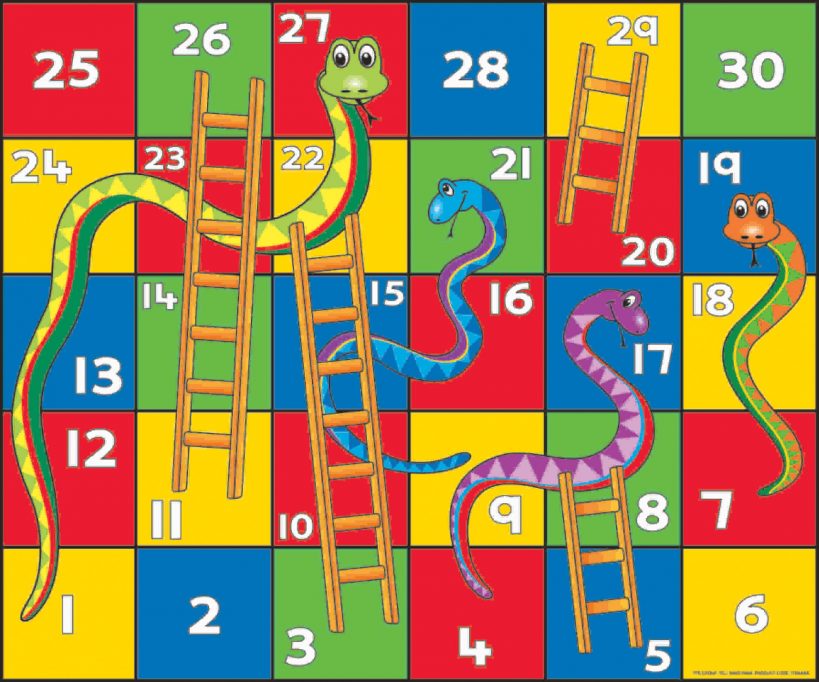Moksha Patam originated in India as a family of dice board games. During the colonial rule, the game wound its way to England, where it became known as Snakes and Ladders.

The board was covered with symbolic images, the top featuring gods, angels, and majestic beings, while the rest of the board was covered with pictures of animals, flowers and people.
The game had a moral lesson. It implied that a person can attain salvation through leading a life doing good to others. By evil deeds, one is supposed to continue in the cycle of rebirth. The ladders therefore were analogous to virtues such as generosity, faith, and humility, while the snakes represented vices such as lust, anger, murder, and theft.
The number of ladders was less than the number of snakes as a reminder that a path of good is much more difficult to tread than a path of sins. Presumably, reaching the last square (number 100) represented the attainment of Moksha (spiritual liberation).
When the game was brought to England, the Indian virtues and vices were replaced by English ones in hopes of better reflecting Victorian doctrines of morality. Squares of Fulfillment, Grace and Success were accessible by ladders of Thrift, Penitence and Industry and snakes of Indulgence, Disobedience and Indolence caused one to end up in Illness, Disgrace and Poverty. While the Indian version of the game had snakes outnumbering ladders, the English counterpart was more forgiving as it contained each in the same amount. This concept of equality signifies the cultural ideal that for every sin one commits, there exists another chance at redemption.
www.zigya.com
Snakes and Ladders is an ancient Indian board game regarded today as a worldwide classic.[1] It is played between two or more players on a gameboard having numbered, gridded squares. A number of "ladders" and "snakes" are pictured on the board, each connecting two specific board squares. The object of the game is to navigate one's game piece, according to die rolls, from the start (bottom square) to the finish (top square), helped or hindered by ladders and snakes respectively.